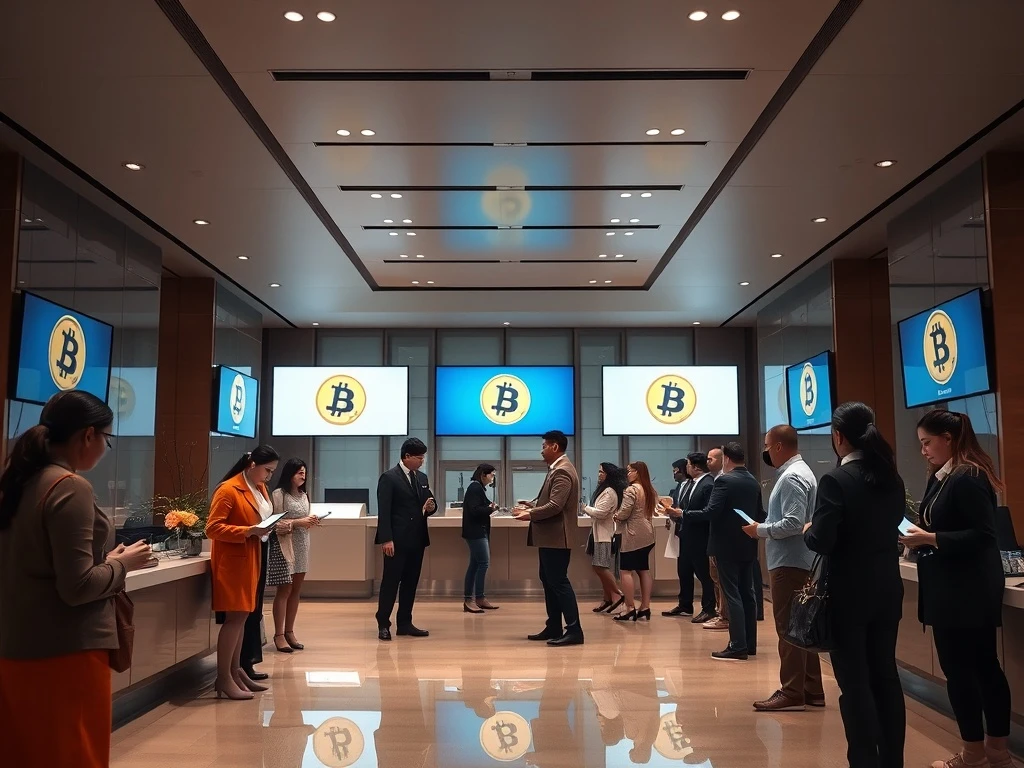Peru Crypto Regulation: BCP’s Historic Move Revolutionizes Digital Asset Access

The financial landscape in Latin America is undergoing a significant transformation. Recently, Banco de Crédito del Perú (BCP), Peru’s largest financial institution, made a groundbreaking announcement. It launched a pilot crypto platform, a move poised to reshape Peru crypto regulation and accessibility. This initiative marks the country’s first regulated foray into digital assets, offering select clients the ability to buy and hold Bitcoin and USDC securely. This development represents a pivotal moment for digital asset integration within traditional banking systems, particularly across Latin America.
BCP’s Groundbreaking Step in Regulated Digital Assets
BCP’s new platform, aptly named Cryptococos, operates under the authorization of Peru’s national banking regulator. This approval is crucial, as it provides a framework for secure and compliant digital asset transactions. The platform allows specific BCP clients to engage with two leading cryptocurrencies: Bitcoin (BTC) and USDC. Furthermore, BitGo, a renowned US-based digital asset infrastructure company, provides the essential custody services for these assets. This partnership ensures a robust and secure environment for client holdings.
To participate in this innovative pilot program, prospective users must meet specific criteria. First, they need to register their interest. Next, they must demonstrate a minimum banking history with BCP, proving their existing relationship with the institution. Finally, completing an investment risk assessment is mandatory before any purchases can occur. These steps highlight BCP’s commitment to responsible and measured entry into the crypto market, prioritizing client safety and regulatory adherence for these regulated digital assets.
Securing Access: The Closed-Loop System and BCP Crypto Compliance
A core feature of BCP’s Cryptococos platform is its closed-loop system. This design ensures that all transactions, including buying and selling Bitcoin and USDC, happen exclusively within the platform. Consequently, users cannot transfer assets to external wallets. This crucial design choice serves a dual purpose. It enhances security for clients and, more importantly, guarantees robust traceability and compliance with stringent anti-money laundering (AML) and counter-terrorism financing (CTF) regulations. This commitment to compliance sets a high standard for future crypto offerings in the region.
This initiative represents a significant milestone for Peru. It marks the first instance a regulated Peruvian bank has received authorization to offer direct customer access to digital assets. BCP, established in 1889, is not just Peru’s largest bank but also its oldest financial institution. By December 2024, the bank managed approximately $52 billion in assets. Its entry into the crypto space with this BCP crypto platform lends immense credibility to the digital asset market within the country and sets a precedent for other traditional financial institutions.
The Evolving Landscape of Bitcoin in Peru
While Peru permits the use of digital assets, crypto activities have historically existed in a legal gray area due to fragmented regulation. However, a growing push from crypto fintech companies has emerged in recent years. For instance, Argentina-based Lemon Cash began operations in Peru in August 2024. Lemon Cash employs a hybrid model: it has a licensed partner authorized by the SBS to issue electronic money in Peruvian soles, while its crypto exchange operates under an El Salvador license. This innovative approach has allowed Lemon Cash to thrive, attracting 1 million users and issuing over 150,000 Visa cards in Peru.
Lemon Cash’s recent success underscores the demand for digital asset services. The company announced a substantial $20 million Series B funding round, led by US funds F-Prime and ParaFi, to fuel its expansion across other Latin American countries. Federico Biskupovich, Lemon Cash’s COO, emphasized the need for more competition to enhance user experiences and build trust in the market. Ultimately, these efforts will drive greater adoption of Bitcoin in Peru and other digital assets. The country’s central bank and government also show increasing interest in digital assets. In 2024, the Central Reserve Bank of Peru (BCRP) launched a digital currency pilot, allowing users to transact with digital soles to boost financial inclusion in rural communities. Furthermore, Peru plans to launch a pilot digital voting program in September 2025, integrating blockchain technology ahead of the April 12, 2026, national elections. These initiatives collectively illustrate a warming stance towards digital innovation.
Driving Latin America Crypto Adoption Forward
The steps taken by BCP and other fintech innovators signal a broader trend across Latin America. The region consistently shows high interest and adoption rates for cryptocurrencies. This is partly due to economic factors and a desire for more accessible financial services. The introduction of regulated platforms like BCP’s Cryptococos is crucial for fostering wider trust and encouraging institutional participation. Such developments pave the way for more mainstream engagement with digital assets, moving beyond early adopters.
Ultimately, increased regulatory clarity and secure platforms will accelerate Latin America crypto adoption. As more banks and financial institutions follow BCP’s lead, the region could become a global leader in integrating digital assets into daily financial life. This evolution promises greater financial inclusion and innovative solutions for millions. The success of pilot programs like BCP’s Cryptococos will provide valuable insights, shaping the future of digital finance not only in Peru but across the entire continent.









